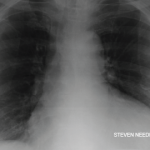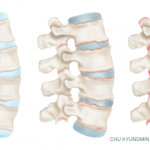New research seeking to describe the characteristics of undefined, systemic autoinflammatory diseases may have identified distinct subgroups, including pericarditis and intellectual impairment…


New research seeking to describe the characteristics of undefined, systemic autoinflammatory diseases may have identified distinct subgroups, including pericarditis and intellectual impairment…

Patients with axial spondyloarthritis have a chronic, immune-mediated inflammatory disease that tends to localize to the sacroiliac joints and spine. Ankylosing spondylitis is, perhaps, the most representative of this group of diseases. Rheumatologists treat patients with axial spondyloarthritis with biologics, such as tumor necrosis factor inhibitors (TNFi’s), which can improve quality of life, activity and…

Historically, ankylosing spondylitis was considered mainly a male disease. But it has become evident this predominance is not as great as previously believed. Here we discuss recent developments in the area, including potential differences between the sexes in symptom and disease burden, immunological and genetic background, diagnostic delay, treatment response and ongoing research questions. Medical…

Larry Beresford |
Scleromyxedema is a rare, mucinous skin disorder of unknown origin, one of a number of conditions that mimic systemic sclerosis. Although cases of scleromyxedema remain rare, a better understanding of its mechanisms of action could have implications for the research and treatment of scleroderma and related autoimmune conditions, says Laura K. Hummers, MD, ScM, co-director…

A patient with rheumatoid arthritis (RA) asks if diet can help ease their symptoms. Or maybe a patient with severe knee osteoarthritis (OA) seeks diet advice because they want to lose weight and relieve pressure on their joints. Although there’s no specific nutrition plan for patients with rheumatic diseases, research has shown many dietary factors…

People with or at risk for symptomatic knee osteoarthritis (OA) may be assigned to four depression subtypes with distinct clusters of depressive symptoms that may affect pain and disability over time, according to a new study in Arthritis Care & Research.1 Four depression subtypes were identified in the study using the Center for Epidemiologic Studies…

Adria Madera-Acosta, MD, Teresa Sosenko, MD, & Diana Girnita, MD, PhD |
Scleroderma renal crisis (SRC) is a life-threatening complication of systemic sclerosis. SRC occurs in 2–15% of patients with diffuse sclerosis and usually within the first five years from the time of diagnosis. Risk factors for SRC include, but are not limited to, early diagnosis, corticosteroid or cyclosporine use, and the presence of anti-RNA polymerase III…

Sirajum Munira, MD, Mamta Sherchan, MD, & Christopher Collins, MD, FACR |
Rheumatoid arthritis (RA) is a chronic systemic autoimmune inflammatory disease. Although RA develops its central pathology within the synovium of diarthrodial joints, many non-articular organs can be involved, particularly in patients with severe joint disease.1 Although most patients are asymptomatic, cardiac involvement is relatively common and includes rheumatic heart nodules, pericarditis (30–50%), pericardial effusion and…

Mary Choy, PharmD, BCGP, FASHP |
Three clinical experts on gout offer their insights into common management errors, clinical pearls, new safety data from the FDA and the role of biologic therapies in the management of gout.

Sir William Osler, widely regarded as one of the greatest physicians of the 20th century, once said, “He who studies medicine without books sails an uncharted sea, but he who studies medicine without patients does not go to sea at all.”1 This sentiment is particularly true in the field of rheumatology, in which understanding the…